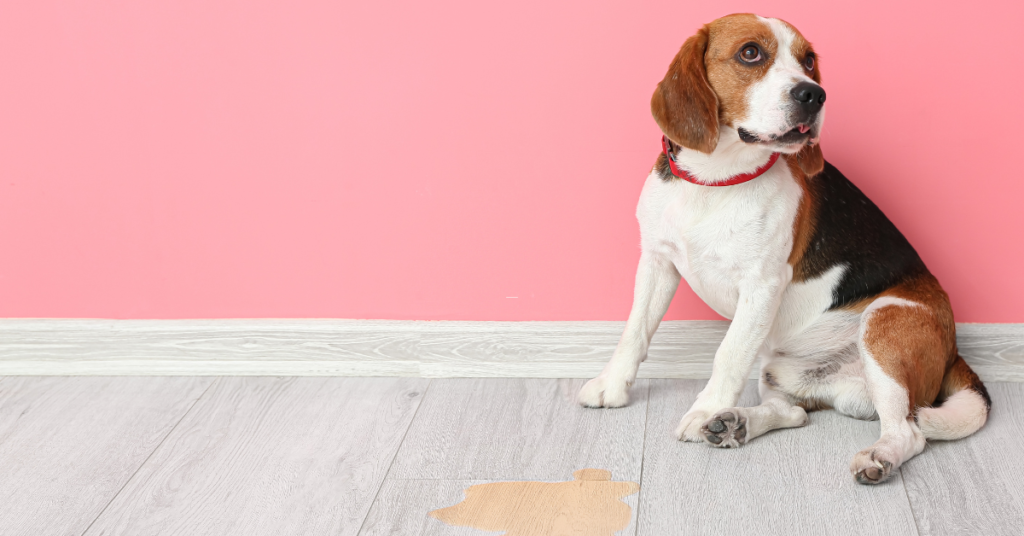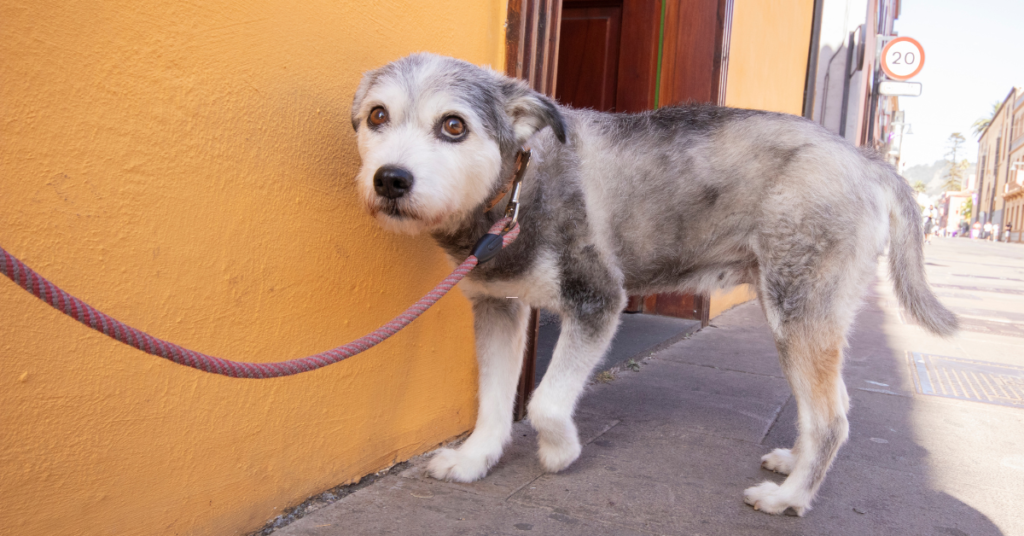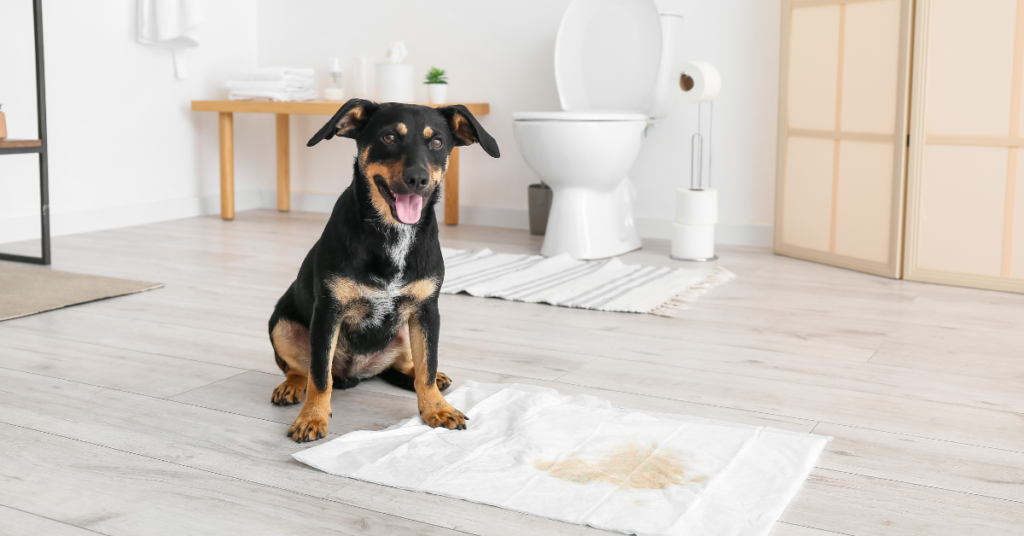Does your dog pee a little when they greet you? If so then they could be exhibiting submissive urination. Contrary to popular belief, submissive urination is not due to poor housetraining but is actually a social issue. In this post, I will deep dive into what submissive urination is and how to stop the unwanted behavior.
What is submissive urination in dogs?
Submissive urination is when a dog feels anxious or scared and urinates slightly in combination with a submissive posture. Just like with excitement urination, submissive urination is uncontrollable and not done on purpose.
This type of behavior is usually common in puppies but can sometimes happen with adult dogs. Puppies don’t quite have full control of their bladders so will let out a little pee when they are excited (excitement urination) or stressed (submissive urination).
This is not the same as puppies having accidents during the potty training process which is very common and natural.

How to tell if your dog is submissive peeing
To tell if your dog urinates submissively you will have to read their body language when they exhibit this type of behavior. For example, if your dog pees but is also exhibiting submissive behavior such as tucking their tail or rolling over and showing their stomach then the inappropriate urination is likely due to submissive urination.
If the inappropriate urination is not in combination with submissive postures or overly excitable behaviors then it is worth speaking to your vet as your dog may be suffering from a medical problem such as a UTI (Urinary Tract Infection).
What causes submissive urination?
Submissive urination can occur when your dog is stressed or anxious which makes them lose control of their bladder. Examples of this are:
- Being greeted by another human
- Being told off or scolded
- Experiencing a traumatic or stressful event (loud noises)
- Being approached by another dog

How to stop submissive urination in dogs
To stop the submissive urination you have to understand that your dog does not have control over the event.
You should not punish or scold your dog for this type of behavior. The behavior happens because they are stressed so scolding them for it will only make it worse.
Instead, your goal is to build up your dog’s confidence and remove any event that they might find threatening.
Tips to prevent submissive urination
1. Use positive reinforcement
Praise and reward your dog when they do not urinate submissively in situations where they usually do.
2. Ignore the behavior
Ignoring the inappropriate peeing can be helpful as it removes attention from the unwanted behavior and discourages it over time.
3. Create a safe space for your dog
It’s important your dog feels safe and comfortable in their home. If possible, provide a safe space for them to retreat to when they feel overwhelmed or stressed.
4. Socialize your dog from an early age
This will help them become more confident and comfortable around other people and more dominant dogs.
5. Give control back to your dog
When new people enter the house, allow your dog to choose if they want to greet the person or run to their safe space.
6. Remain calm
When submissive urination occurs, remain in a calm and relaxed demeanor. This will encourage your dog to not feel threatened so they won’t feel the need to show their submission to you.
7. Change the way you greet your dog
Minimize the amount of attention your dog gets when people enter the home until they are relaxed and calm. Then get down to their level to greet them which prevents you from leaning over them in a dominating manner.
8. Potty breaks
As this behavior is uncontrollable. You can reduce the likelihood of it happening with regular potty breaks or an indoor dog potty so your puppy’s bladder isn’t always full when people come home and greet them.
9. Seek professional help
If the behavior persists, consider seeking a behavioral trainer who can come into your home and pinpoint the exact reason why your dog is submissively peeing and give you advice as to how to limit this.

Conclusion
Submissive urination can be an annoying behavior in dogs. However, with a little patience and understanding, it can be trained out of your dog. Taking the time to create a safe space for your dog, socialize them from an early age and remaining calm are all important steps that can help prevent the unwanted behavior. If the behavior persists, it might be worth seeking professional help for a more tailored approach. With these tips, you can successfully manage this behavior and help your dog be a more confident and happy pup!



